
Rishi is a pediatric infectious disease physician and works at Khan Academy.
- Subject:
- Agriculture & Natural Science
- Anatomy
- Physiology
- Material Type:
- Lesson
- Provider:
- Khan Academy
- Author:
- Sal Khan
- Date Added:
- 09/22/2013

Rishi is a pediatric infectious disease physician and works at Khan Academy.
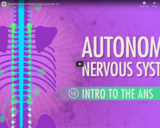
The video resource "Autonomic Nervous System: Crash Course A&P #13" is included in the "Anatomy & Physiology " course from the resources series of "Crash Course". Crash Course is a educational video series from John and Hank Green.
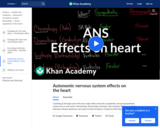
Carefully go through each of the four major effects that the sympathetic and parasympathetic system has on your heart: Chronotropy, Dromotropy, Inotropy, and Lusitropy. Rishi is a pediatric infectious disease physician and works at Khan Academy.
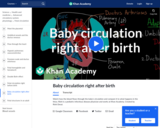
Watch how the blood flows through the baby's circulation and compare it to what happens in the fetus. Rishi is a pediatric infectious disease physician and works at Khan Academy.
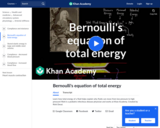
Learn how total energy of a fluid helps explain why fluids can move from low pressure to high pressure! Rishi is a pediatric infectious disease physician and works at Khan Academy.
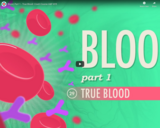
The video resource "Blood, Part 1 - True Blood: Crash Course A&P #29" is included in the "Anatomy & Physiology " course from the resources series of "Crash Course". Crash Course is a educational video series from John and Hank Green.
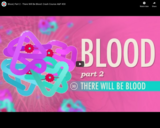
The video resource "Blood, Part 2 - There Will Be Blood: Crash Course A&P #30" is included in the "Anatomy & Physiology " course from the resources series of "Crash Course". Crash Course is a educational video series from John and Hank Green.
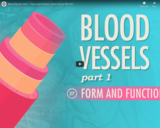
The video resource "Blood Vessels, part 1 - Form and Function: Crash Course A&P #27" is included in the "Anatomy & Physiology " course from the resources series of "Crash Course". Crash Course is a educational video series from John and Hank Green.
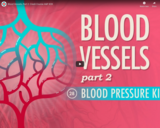
The video resource "Blood Vessels, part 2: Crash Course A&P #28" is included in the "Anatomy & Physiology " course from the resources series of "Crash Course". Crash Course is a educational video series from John and Hank Green.
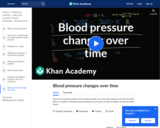
See how increasing resistance in the blood vessels can cause blood pressure to rise over time. Rishi is a pediatric infectious disease physician and works at Khan Academy.
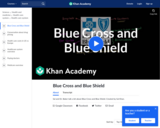
Sal and Dr. Baker talk a bit about Blue Cross and Blue Shield
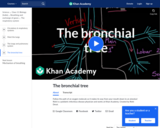
Follow the path of an oxygen molecule as it makes its way from your mouth down to an alveolus! Rishi is a pediatric infectious disease physician and works at Khan Academy.

Medical Terminology and Body Systems I prepares you to use appropriate medical terminology to identify the structural organization of the body, identify body systems, and describe body special orientation. You will identify the normal function of each body system. You will identify word parts and abbreviations as they relate to body systems. This course has 4 Credit Units that will assist you in learning the course objectives.
NOTE: This is a Terminology course which will require you to properly pronounce words. You will need a set of headphones with a microphone attached in order to complete some assignments. Ear buds with microphone work just fine.
Course Outcomes:
1. Describe the structural organization of the human body and to identify Body Systems.
2. Describe Body Planes, Directional terms, quadrants, and cavities.
3. Describe the normal function of each body system, identify its major organs as well as their anatomical location.
4. Identify medical terms, labeling the word parts and define both medical terms and abbreviations related to all body systems.
5. Identify and analyze treatment modalities, normal function, organization, and diagnostic measures, for the following body systems: a. Integumentary System b. Skeletal System c. Muscles and Joints d. Nervous System e. Blood and Lymphatic Systems

Medical Terminology and Body Systems II prepares you to list major organs in each body system, describe their function, and identify and analyze pathologies related to each system. You will be able to discuss implications for disease and disability as it relates to each system, as well as issues related to treatment for each pathology and how it changes throughout the lifespan. This course has 4 Credit Units that will assist you in learning the course objectives.
Course Outcomes:
1. Describe the normal function of the following body systems, identifying major organs as well as their anatomical location: a. Cardiovascular b. Respiratory c. Digestive d. Endocrine e. Eyes and Ears f. Urinary g. Male and Female Genital and Reproductive Systems h. Obstetrics
2. Identify major organs as well as their anatomical location in the following body systems: a. Cardiovascular b. Respiratory c. Digestive d. Endocrine e. Eyes and Ears f. Urinary g. Male and Female Genital and Reproductive Systems h. Obstetrics
3. Analyze treatment modalities and diagnostic measures for the following body systems: a. Cardiovascular b. Respiratory c. Digestive d. Endocrine e. Eyes and Ears f. Urinary g. Male and Female Genital and Reproductive Systems h. Obstetrics
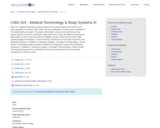
This course prepares the student to list major specialties in medicine, allied health, and their qualifications as well as their contribution to the overall health care system. The student will be able to discuss acute and chronic body system diseases, processes, and failures addressed by these major specialties and branches of allied health, as well as common treatment modalities for each system and how these might change throughout the lifespan.
Course Outcomes:
1. Describe the normal scope of practice of the following disciplines: a. Pediatrics b. Diagnostic Imaging c. Oncology d. Pharmacology e. Mental Health f. Gerontology
2. Analyze treatment modalities and diagnostic measures for the following disciplines: a. Pediatrics b. Diagnostic Imaging c. Oncology d. Pharmacology e. Mental Health f. Gerontology
3. Demonstrate the coordination of necessary care planning for chronic disease management in all body systems.
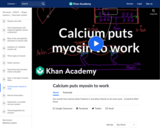
See exactly how Calcium binds Troponin-C and allows Myosin to do some work. Rishi is a pediatric infectious disease physician and works at Khan Academy.
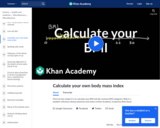
Find out how simple it is to calculate your BMI and the common BMI categories. Rishi is a pediatric infectious disease physician and works at Khan Academy.
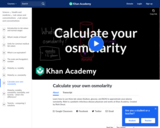
Learn how to use three lab values (Sodium, glucose, and BUN) to approximate your plasma osmolarity. Rishi is a pediatric infectious disease physician and works at Khan Academy.
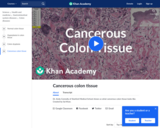
Dr. Andy Connolly of Stanford Medical School shows us what cancerous colon tissue looks like

Find out how the flu spreads from person to person, and who is at the greatest risk of getting complications of the flu. Rishi is a pediatric infectious disease physician and works at Khan Academy. These videos do not provide medical advice and are for informational purposes only. The videos are not intended to be a substitute for professional medical advice, diagnosis or treatment. Always seek the advice of a qualified health provider with any questions you may have regarding a medical condition. Never disregard professional medical advice or delay in seeking it because of something you have read or seen in any Khan Academy video.